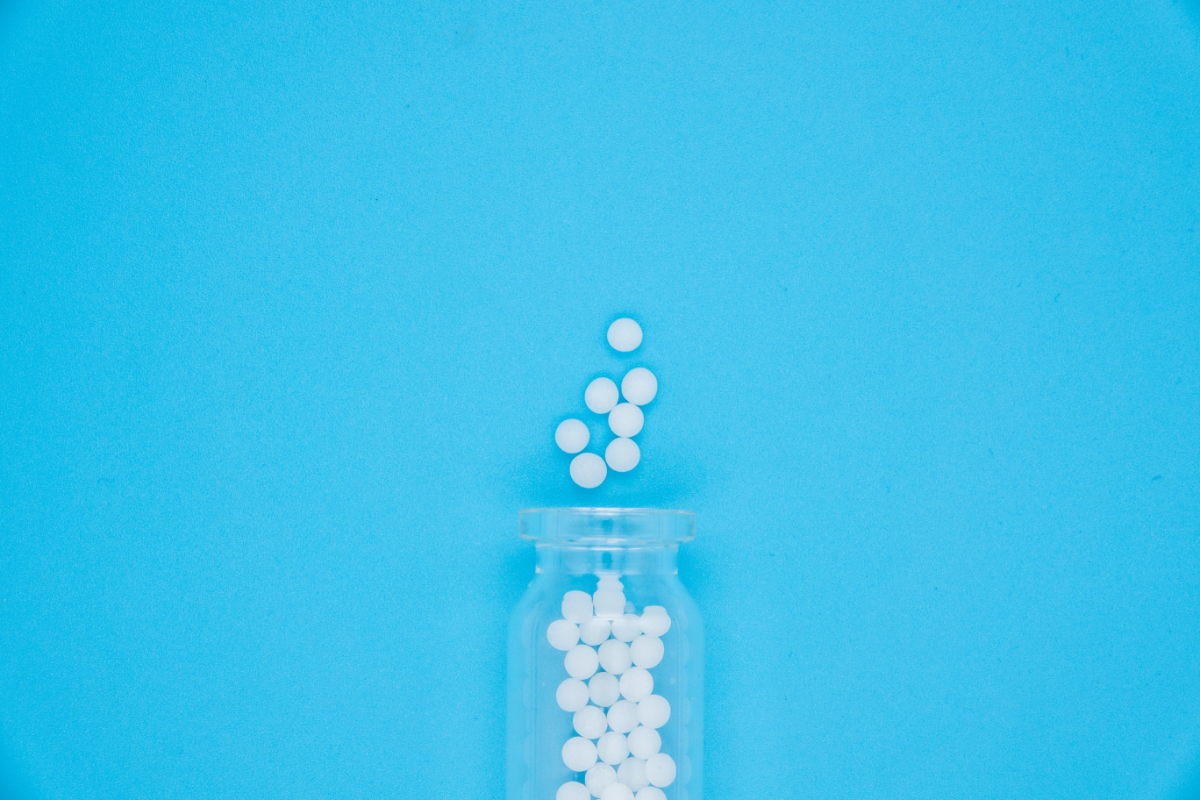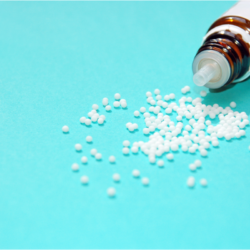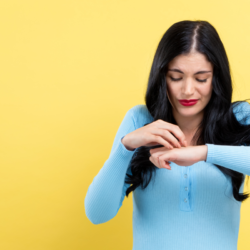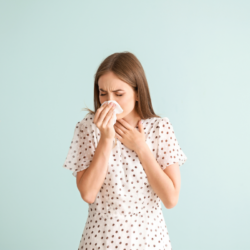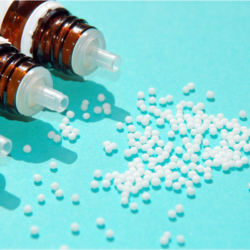In our quest for perfection, clear, blemish-free skin is often at the top of our list. Fortunately, the world of homeopathy offers us powerful, natural remedies to achieve this. One such remedy is Eugenia Jambosa. But when to use the homeopathic remedy Eugenia Jambosa? Let’s delve into the details of this incredible product.
What is homeopathy?
Homeopathy is a form of alternative medicine founded at the end of the 18th century by Samuel Hahnemann, a German doctor. It is based on two fundamental principles:
1. Similarity
The first principle of homeopathy is the “law of similars”, often expressed by the phrase “like cures like”. This means that substances capable of causing symptoms in a healthy person are used to treat similar symptoms in a sick person. For example, a substance that causes cold symptoms in a healthy person could be used to treat a cold in a sick person.
2. Dilution and dynamisation
The second principle is that of dilution and dynamisation. The substances used in homeopathy are diluted to such an extent that the final solution may not contain a single molecule of the original substance. Homeopaths believe that this extreme dilution increases the effectiveness of the remedy. Dynamisation, a process involving vigorous shaking of the solution at each stage of dilution, is also considered essential for transferring the properties of the original substance to the final solution.
Controversy and criticism
Homeopathy is the subject of controversy in the scientific community. Critics point to the lack of solid scientific evidence supporting its efficacy beyond the placebo effect. The extreme dilution used in homeopathic preparations is often cited as a reason why these remedies could not work according to the principles of modern chemistry and pharmacology.
Use and acceptance
Despite these controversies, homeopathy remains popular in some parts of the world. It is used to treat a wide range of conditions, from acute ailments to chronic illnesses. Homeopathy is sometimes integrated into complementary and alternative medicine systems and is available in various forms, such as granules, tablets and liquids.
Overview of the Eugenia Jambosa remedy
Eugenia Jambosa, a homeopathicremedy based on the pink apple tree or jambosade, is recognised for its exceptional properties in dermatology. Available in granules of various strengths (4CH, 5CH, 7CH, 9CH, 15CH), it is a valuable ally in the fight against acne.
The role of Eugenia Jambosa in dermatology
This homeopathic remedy is mainly used to treat skin problems, particularly acne. Thanks to its unique properties, Eugenia Jambosa helps to eliminate pimples and restore clear, clear skin.
Eugenia Jambosa for facial acne
Facial acne is a skin problem that affects many people, particularly teenagers and young adults. It is characterised by the appearance of pimples, mainly on the face and sometimes on other parts of the body such as the back or chest. This phenomenon is generally due to excessive sebum production, which clogs the skin’s pores and encourages the proliferation of bacteria.
Eugenia Jambosa, a homeopathic remedy extracted from the rose apple tree or jambrosade, is particularly effective against facial acne. This remedy is well known in the field of dermatology for its ability to combat various skin problems, including acne. In fact, Eugenia Jambosa is specifically effective in treating acne around the nose, an area that is often difficult to treat with conventional treatments due to the sensitivity of the skin in this area. By using Eugenia Jambosa, it is possible to reduce the appearance of pimples and promote healthier, clearer skin.
Eugenia Jambosa works gently but effectively on facial acne. Unlike traditional cosmetic treatments, which can be harsh and drying on the skin, Eugenia Jambosa works in harmony with the body to restore the skin’s natural balance. This makes it an ideal solution for those looking for a more natural and gentle approach to acne treatment.
Eugenia Jambosa for mild acne
Eugenia Jambosa is not only useful for severe acne problems. It is also effective for simpler cases of acne, offering a gentle solution for a variety of skin problems.
Eugenia Jambosa as an adjunct to treatment
Eugenia Jambosa is an effective homeopathic remedy for facial acne. However, it should be noted thatit is not a universal remedy and may not be sufficient on its own to treat all cases of acne. Acne is a complex skin condition that can have a number of causes, including hormonal, environmental and genetic factors. As a result, it is often necessary to adopt an integrative approach to effectively treat this condition.
With this in mind, Eugenia Jambosa can be used to complement other acne treatments. For example, it can be combined with conventional topical treatments such as creams or gels containing benzoyl peroxide or salicylic acid. These products work by eliminating acne-causing bacteria and exfoliating dead skin cells to prevent clogged pores.
Eugenia Jambosa can also be combined with other homeopathic remedies depending on each individual’s specific symptoms. For example, for acne sufferers with very oily skin, combining Eugenia Jambosa with other homeopathic remedies such as Natrum Muriaticum or Sulphur may be beneficial. Similarly, for acne associated with painful or irregular menstruation, the addition of Sepia or Pulsatilla can improve treatment results.
It is important to stress that the use of Eugenia Jambosa in addition to other treatments should always be carried out under the supervision of a qualified health professional. Although homeopathy is generally considered safe, the combination of several remedies may require dose adjustment and regular monitoring to ensure safe and effective use.
Eugenia Jambosa in combination with other homeopathic remedies
To maximise the effectiveness of treatment, Eugenia Jambosa can be combined with other homeopathic remedies. Selenium metallicum and Sulfur iodatum are ideal supplements for obtaining the best results.
How do I use this natural remedy?
It is essential to know how to use Eugenia Jambosa correctly to obtain the best results.
Precautions for use
It is important to follow certain precautions when using this natural remedy to ensure the effectiveness and safety of the treatment.
Tips for optimum use
Do not touch the homeopathic granules or globules with your fingers. Avoid consuming astringent substances such as coffee, tobacco, camphor, mint and camomile half an hour before taking the medicine. Use a mint-free toothpaste to avoid any interaction with the granules.
Use in children and pregnant women
these granules have no known chemical toxicity. However, it is always advisable to consult a doctor before starting treatment, especially if you are pregnant or planning to give this remedy to a child.
Use during pregnancy
In the case of pregnant women, the use of these granules must also be approved by a health professional. Although homeopathic remedies have a generally good safety profile, each pregnant woman is unique and it is essential to ensure the safety of the foetus.
How does an acne pimple form?
The formation of an acne pimple is a complex process involving several factors, including the sebaceous glands, hair follicles and various cells and hormones. Here are the key stages in the process:
- Sebaceous secretion: The sebaceous glands produce an oily substance called sebum. This production can be increased under the influence of hormones, particularly androgens. In some people, particularly during adolescence, these glands are more active, producing an excessive amount of sebum.
- Sebum build-up: Sebum accumulates in the hair follicle, the duct that connects the sebaceous gland to the surface of the skin. Excess sebum can cause this duct to become blocked.
- Proliferation of skin cells: At the same time, there may be an increase in the proliferation of epidermal cells (keratinocytes). These cells can accumulate in the follicle, contributing to the blockage.
- Comedo formation: The mixture of sebum and epidermal cells forms a plug, known as a comedo. Closed comedones (whiteheads) and open comedones (blackheads) form depending on the opening of the follicle on the surface of the skin.
- Bacterial activity: Propionibacterium acnes bacteria, normally present on the skin, can proliferate in blocked follicles. This bacterium feeds on sebum and produces substances that provoke an inflammatory reaction.
- Inflammation and pimple formation: The inflammatory reaction induced by bacterial waste leads to an accumulation of leucocytes (white blood cells) and the formation of pus. This leads to the development of a red, swollen inflammatory lesion, commonly known as an acne pimple.
How can acne be prevented?
To prevent acne and reduce outbreaks, there are a number of tips and measures you can take:
- Cleansing the face: We recommend cleansing the face twice a day with a mild soap or cleansing gel specially designed for acne-prone skin. Avoid scouring products and use specially adapted soaps available from chemists for greater effectiveness.
- Make-up and skincare: Using non-comedogenic products is essential to avoid clogging pores. Creams that are too greasy should be avoided, as they can stimulate the sebaceous glands and make acne worse. Similarly, it is preferable to use make-up products with less coverage to allow the skin to breathe.
- Sun protection: Sun protection is crucial, especially when exposed to the sun. Although the sun can temporarily dry out pimples, it then causes an overproduction of sebum. It is therefore important to use a suitable sun cream.
- Skin hydration: Even acne-prone skin needs to be hydrated. It’s important to use suitable, non-greasy moisturising products to maintain the skin’s balance without weighing it down.
- Managing pimples: It is advisable to avoid touching or piercing pimples, as this can increase the risk of scarring. Red rashes and pustules should be treated with care to avoid worsening the condition of the skin.
- Clothing and bedding: To prevent acne, particularly on the back, it is advisable to wash clothes and bedding regularly. Choosing cotton clothes instead of synthetic materials is preferable, as they allow the skin to breathe and reduce the retention of moisture and bacteria.
- Treatments: In the case of mild acne, various over-the-counter products can be effective. Natural treatments, such as the use of clay masks or tea tree oil, can be considered, although their effectiveness has not been scientifically proven. For more severe acne, it is advisable to consult a healthcare professional for prescription treatments, which may include antibiotics.
This advice provides a basis for preventing and managing acne. However, it is important to consult a dermatologist or healthcare professional for personalised recommendations tailored to your skin type and situation.

